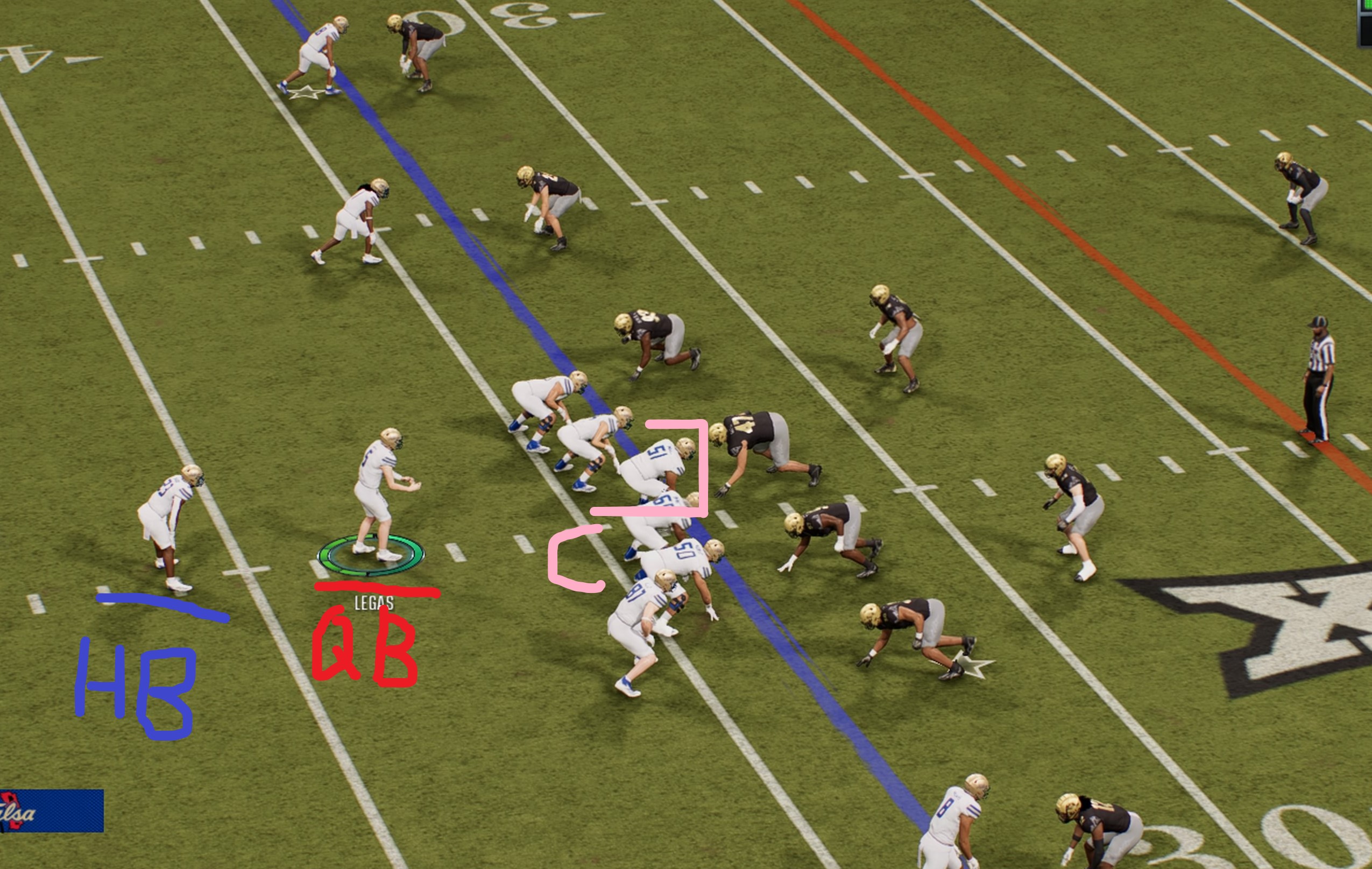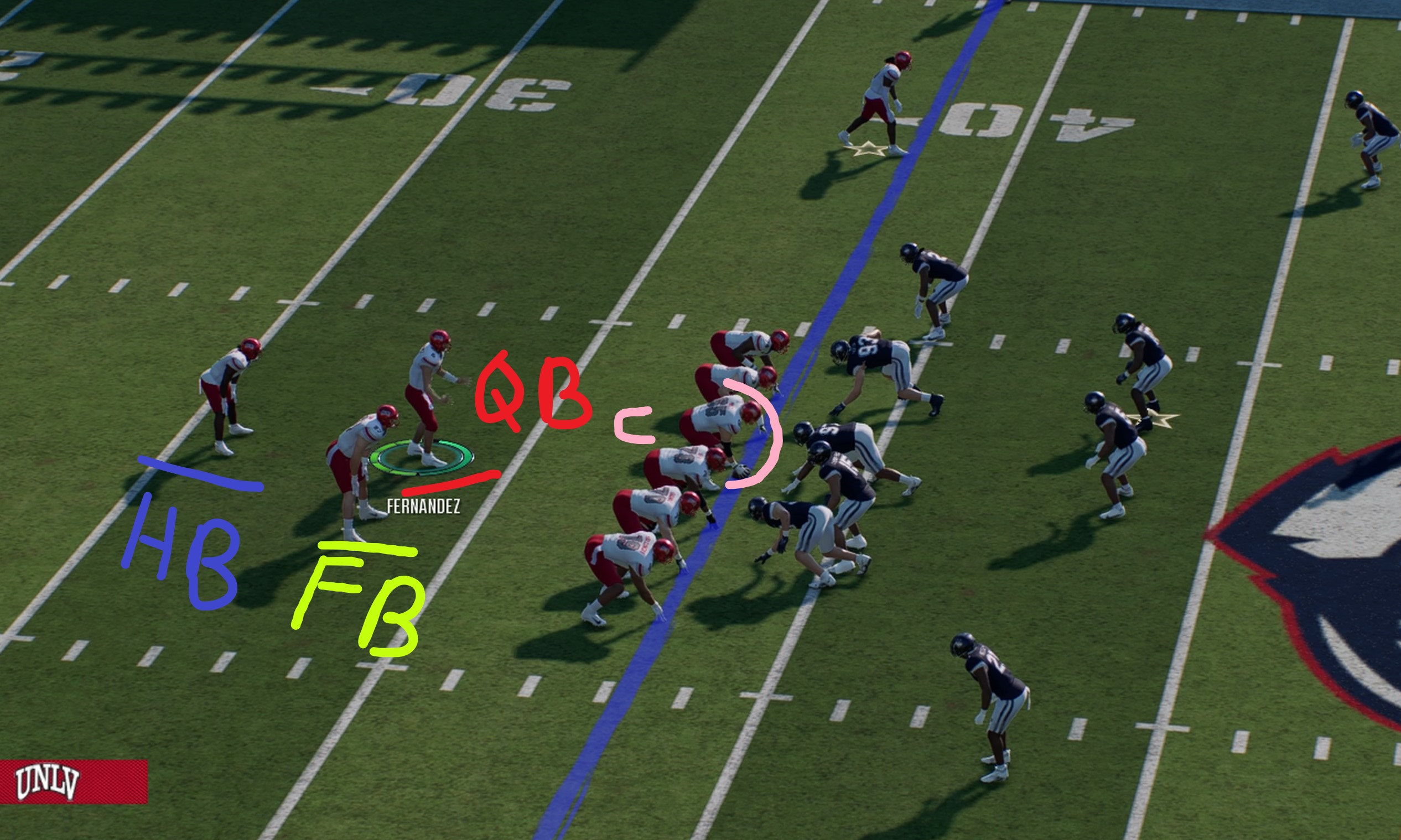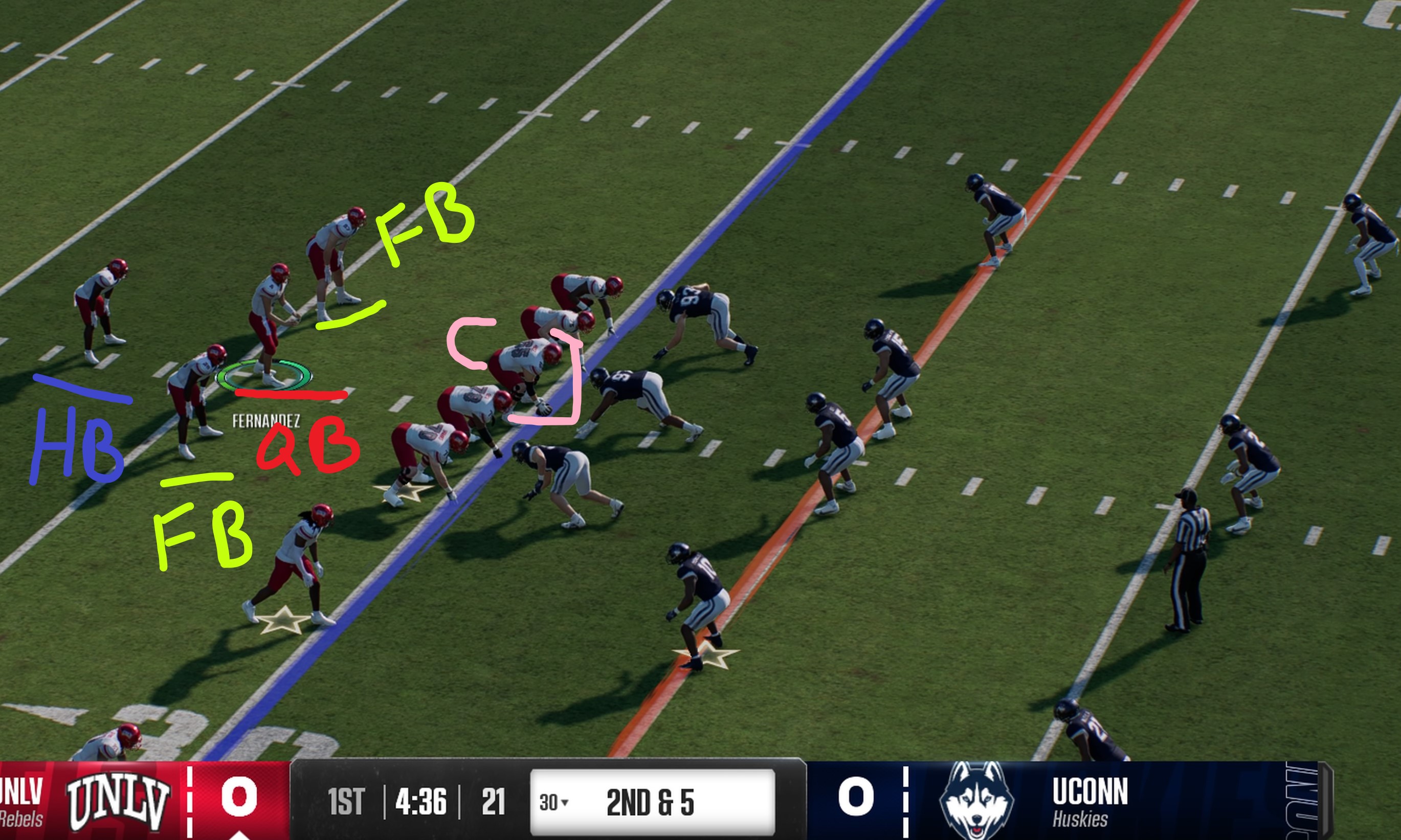The Empty Formation
What is the Pistol Formation?
The Pistol Formation is a hybrid offensive alignment that combines elements of both the traditional shotgun and under-center formations. In the pistol, the quarterback lines up about 3–4 yards behind the center — closer than in a standard shotgun formation — with a running back directly behind the quarterback. This setup allows the offense to blend quick passing plays with a strong downhill running game, giving it incredible versatility. First popularized byCoach Chris Ault at the University of Nevada in the mid-2000s, the pistol has since made its way into both college and professional football.

The Diagram shows where positions are lined up in a traditional pistol formation.
The annotated game image shows an in-game example. Notice the HB is directly behind the QB, who is in shotgun behind the center.

Key Features of the Pistol Formation
- Quarterback Depth: The QB stands closer to the line of scrimmage than in a shotgun, making handoffs quicker and making it easier to sell play-action fakes.
- Running Back Alignment: The RB lines up about 2–3 yards directly behind the quarterback, allowing for a full-speed, downhill run.
- Balanced Attack: Teams can run a strong rushing attack or execute quick passes without tipping their hand pre-snap.
- Versatility for Mobile Quarterbacks: Ideal for option plays, read-options, RPOs, and bootlegs.
Pistol Variations
The Pistol Formation has a couple variations that are tracked by the scout app, they both involve putting an extra player in the backfield, most often a Fullback (FB). The extra FB are lined up on either side of the QB to act as an extra blocker or player that could be handed the ball run. A FB on one side of the QB is called a Pistol Strong and a FB lined up on both sides of the QB is called a Pistol Full


Why Teams Use the Pistol
The Pistol Formation solves a problem: it lets offenses keep a strong run threat without
forcing the quarterback to turn his back to the defense,
as he would in traditional under-center sets. This keeps the QB in a better position to read the defense,
especially for quick throws.
This allows the offense to:
- Be unpredictable
- Run a broader range of plays
- Put extra pressure on linebackers and safeties
Common Plays from the Pistol
- Inside Zone Run: A powerful downhill run that lets the RB hit the line of scrimmage quickly.
- Play-Action Pass: Faking a handoff to set up deeper throws downfield.
- Bootlegs and Rollouts: Getting the quarterback outside the pocket with run-pass options.
Final Thoughts
The Pistol Formation is about balance, speed, and unpredictability. It blends the best parts of old-school power football with the modern spread passing game — and when executed well, it can be difficult to defend.
Whether you're a coach, player, or fan, understanding the pistol helps you see how today’s offenses are evolving to stay one step ahead of the defense.